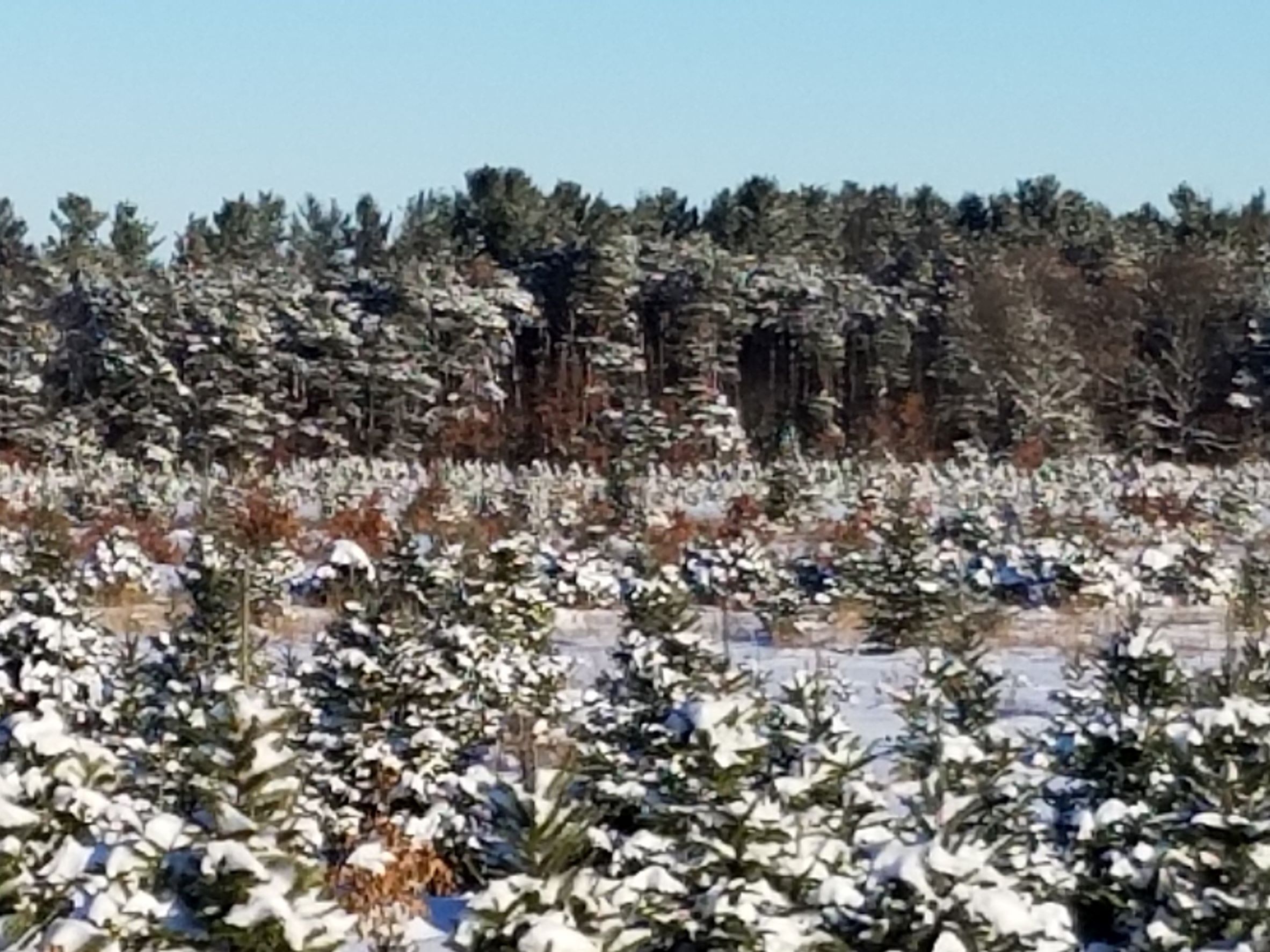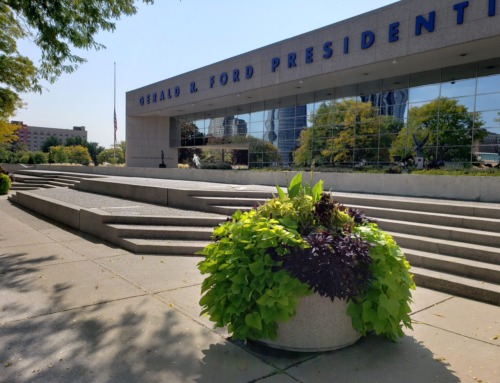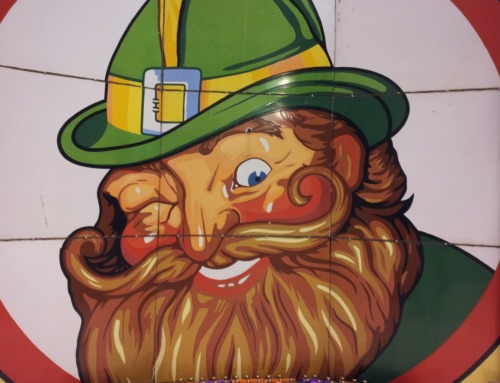Christmas trees are a popular symbol and decoration for the holiday season. The tradition began in Germany and was brought to America as early as the 1830s by German settlers. They were made popular in 1846 by Queen Victoria of England and her family. Michigan and nearby Chicago had many German settlers living there in the late 1800s. That was also the time of Michigan’s lumber boom. The desire for Christmas trees was heavy in the Midwest. Many families wanted them in their homes. Michigan entrepreneurs took note and found a way to get the evergreens to these destinations. They used what came to be known as Christmas Tree Ships, even though it involved taking great risks.
The Great Christmas Tree Ship
One of the most well-known of these ships was the Rouse Simmons. The Simmons was a three-masted schooner that was built in 1868 in Wisconsin. It quickly became a part of Charles Hackley’s fleet and carried wood from the Muskegon lumber baron’s mills to other ports in the Great Lakes. At one point, it was making almost weekly runs from Grand Haven to Chicago.
As many schooners at the time did, the Simmons changed owners several times. By 1910, she was showing signs of wear. At that time, Mannes Bonner from St. James, Michigan, was the majority owner of the ship. Captains Charles Nelson of Chicago and Herman Schuenemann owned the rest. Schuenemann and his brother, August, had been in the business of shipping Christmas trees for years. Consequently, he used his new ship to do just that. With the wild and unpredictable weather on the Great Lakes, this could prove to be a dangerous business. Schuenemann knew that well. The Great Lakes and their brutal waves had caused the death of August, in 1989, on another ship carrying Christmas trees.
Herman Schuenemann, as odd as it seems, thought the risk was worth it. He was known as a generous and giving man. Upon arriving in Chicago, he would dock by the Clark Street Bridge. Then decorate his ship with lights, and families would be able to come aboard and purchase an inexpensive Christmas tree. It was not uncommon for Schuenemann to give trees away to the needy families. He was so beloved in Chicago, the residents and newspapers nicknamed him Captain Santa.
Last Voyage of Rouse Simmons
By 1912, the Simmons continued to show signs of wear. The weather in late fall, as always, was questionable. Yet, Schuenemann still felt the need to go on a late Christmas tree run. While in Thompson, Michigan, he filled the hold with 5,500 evergreens. They were stacked up to eight feet high on the deck, giving the Simmons the look of a floating forest. The co-owner of the ship, Captain Charles Nelson, was unsure about making the trek, but was compelled to go out of loyalty to Schuenemann. They left the port near Manistique on Friday, November 22 and headed south toward Chicago.
By the next day, the winds had intensified and waves crashed against the boat. Evidence shows that the crew tried to throw an anchor to hold the Simmons in the wind, but there was something very wrong with the ship. It foundered off the coast of Two Rivers, Wisconsin and was spotted lying low in the water with flag at half mast, signaling distress. By the time a life boat arrived at the location, the ship had vanished with no survivors found. At the time of its sinking, sixteen or more men had been on board, including the two captains, the crew, and lumberjacks catching a ride home to Chicago for the holidays. None of the bodies were ever recovered.
Message in a Bottle
Not long after the wreck, a message in a bottle washed up in Sheboygan, Wisconsin, corked with a piece of pine tree. It read: “Friday … everybody goodbye. I guess we are all through. During the night the small boat washed overboard. Leaking bad. Invald and Steve lost too. God help us.” It is believed Captain Nelson wrote the message. In December of 1912, a good number of Christmas trees were found washed up near Pentwater, Michigan and for several years the trees continued to wash up on the shores of Lake Michigan. Years later, in 1924, Captain Schuenemann’s oil-skinned-wrapped wallet was found by a fisherman and was returned to his widow.
Mrs. Barbara Schuenemann, proud of her husband’s legacy, had continued his tradition of selling Christmas trees along the Chicago pier with her daughters, Elsie, Hazel and Pearl for many years. However, the practice of using schooners to transport Christmas trees ended in the 1920s when railroads, highways and tree farms made it easier, safer, and more affordable.
Uncovering the Remains
In 1971, the Rouse Simmons was discovered off the coast of Two Rivers, Wisconsin by scuba diver Gordon Kent Bellrichard of Milwaukee, who was actually searching for another wreck. In 2006, archeologists were finally able to dive down and explore the wreck. Much of the hull remained intact with many trees still packed in the hold, some with needles still on the branches. Divers discovered that the Simmons was facing northwest but there is no real evidence of why Captain Schuenemann changed course, or if he really did.
The Mystery Continues
As with so many Great Lakes shipwrecks, there are many unanswered questions about the sinking of the Christmas tree ship. While early reports suggest the ship was lost in one of the great lakes wild storms, later investigations say that there would have been fairly clear conditions when the vessel was lost. There was a storm that day, but it didn’t start until after the Simmons would have been at the bottom of the lake. It was concluded that high waves, combined with an overload of cargo and an aging ship all contributed to the tragedy.
I know that I have written other articles on Great Lake shipwrecks but the Christmas tree ships intrigued me. I, like many others, love to have a real Christmas tree in my home. The beauty and smells are undeniably one of the most memorable parts of Christmas. I am thankful that there are so many tree farms in Michigan. We have the ability to tromp through the woods in search of the ideal tree or drive to a local Christmas tree lot and choose a pre-cut one. This year while you are setting up your Christmas tree, whether it be real or artificial, remember those that went before us who made the sacrifice to bring our early ancestors the same joy you are experiencing now.







Leave A Comment
You must be logged in to post a comment.